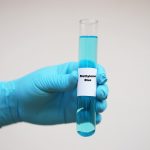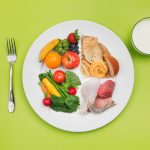Open any fashion magazine these days, and you are sure to be visually bombarded by advertisements. Whether it is age-rewinding make-up or figure-flattering jeans, it seems that everyone is obsessed with the exterior, and ways to appear more magnificent and appealing than your neighbor.
As a fitness professional, I am certainly in tune with the importance of muscular strength and fat-to-muscle ratios, as well as flexibility and endurance. However, shoring up our interior can go a long way toward keeping us youthful and healthy.
I’ll admit to taking a daily multivitamin just in case my nutritional intake should fall short at any given time. While we are all keenly aware of the importance of calcium, iron, Vitamins A, B, C and especially D, there is an element that often gets overlooked, and that is magnesium.
Magnesium is vitally important to our health. Among other functions, this mineral is responsible for activating nerves and muscles, helping create ATP, digesting proteins and fats, and also serves as a building block for DNA synthesis. Surprisingly, many individuals are severely lacking in magnesium despite a varied diet.
While this may seem like a trivial issue, it takes on much more importance when we consider the delicate balance our bodies must strike in terms of a calcium-magnesium ratio. Since this balance has much to do with cardiac function, the dilemma becomes even more significant when we take into account that most Americans tend to overdo calcium intake.
If the body’s ratio is too heavily in favor of calcium, muscles tend to spasm…and the heart is indeed a muscle! Calcium causes muscles to contract; in the absence of an adequate balance of magnesium, the muscle and nerve function for which it is responsible cannot function properly. If this sounds scary, it should….it is!
So, the next question most assuredly is, “Where can I find naturally-occurring sources of magnesium?” An ideal source is biologically grown organic foods (those grown on soil treated with mineral fertilizers). Chlorophyll has a magnesium atom in its center, allowing green vegetables to utilize the sun’s energy. Seaweed and green leafy vegetables such as spinach and Swiss chard can be excellent sources of magnesium, as are some beans, nuts and seeds (pumpkin, sunflower and sesame seeds). Juicing vegetables for a refreshing beverage is also an ideal way of ensuring that you are deriving their maximum potency of magnesium.
Sharing this information with clients will go a long way toward their realization of just how much you care about their progress and wellbeing. Encourage them to treat themselves to improved muscle function, and be magnificent with magnesium!






